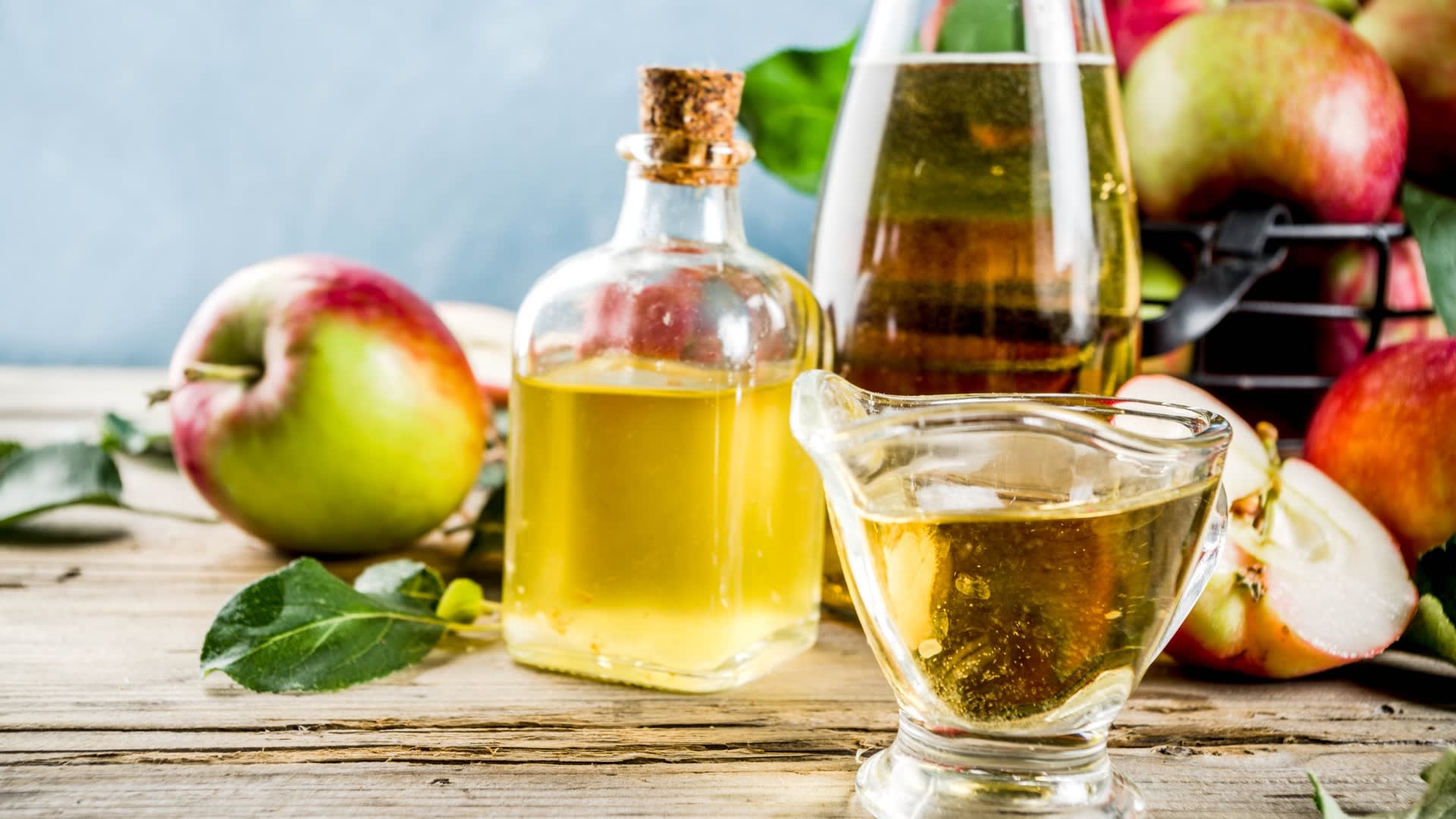According to Renub Research Latest Report vinegar market is projected to expand to US$ 8.64 billion by 2033 from US$ 6.61 billion in 2024, at a CAGR of 3.02% during 2025–2033. Increasing consumer interest in natural preservatives, growing health consciousness, rising culinary applications, and the popularity of organic foods are key factors driving this growth.
Vinegar, a sour liquid produced by acetic acid bacteria from ethanol, has a long history of use in cooking, food preservation, household cleaning, and healthcare. Typically containing 4–8% acetic acid, vinegar comes in varieties such as white, rice, wine, apple cider, and balsamic, each with unique flavors and applications. Its versatility, along with potential health benefits like blood sugar regulation and digestive support, makes it a staple in households worldwide.
Global Vinegar Market Overview
The vinegar market is witnessing steady growth due to consumer preference for functional and natural foods. Its applications in home cooking, professional kitchens, cleaning, and wellness drive demand across multiple sectors. Specialty vinegars, including flavored, organic, and artisanal varieties, are increasingly popular among gourmet enthusiasts and health-conscious consumers.
The market also benefits from the rising interest in ethnic and traditional foods, which encourages the use of diverse vinegar types for marinades, sauces, pickling, and dressings. In addition, environmentally aware consumers are attracted to products with eco-friendly packaging and organic sourcing.
👉 Want to explore detailed market trends, segment insights, and forecasts? 🔗 Request Sample Report
1. Rising Demand for Household Cleaning Products
As consumers move away from chemical-based cleaning products, vinegar has emerged as a natural, eco-friendly alternative. Its acidity allows it to dissolve grease, disinfect surfaces, and remove odors effectively, making it ideal for kitchens, bathrooms, and general household cleaning.
Companies are increasingly incorporating vinegar into innovative cleaning solutions. For example, Nikol’s 2024 “Grandma’s Secrets” line of wet wipes, containing vinegar and baking soda, offers convenient and natural cleaning for food stains and grease, leaving a refreshing citrus scent. Growing awareness of eco-conscious products is driving the market for vinegar-based cleaning supplies, particularly among environmentally conscious consumers.
2. Increased Focus on Health and Wellness
Health-conscious consumers are turning to vinegar for its natural benefits. Apple cider vinegar and balsamic varieties are particularly valued for supporting digestion, regulating blood sugar, and aiding weight management.
Organic and unpasteurized apple cider vinegar products, such as Carandini’s Organic Apple Cider Vinegar (2023), meet the demand for handmade, nutrient-rich, and unfiltered products. These products appeal to consumers seeking functional foods and natural dietary supplements, bridging the gap between traditional culinary use and wellness trends.
The versatility of vinegar also supports its incorporation into organic skincare, detox regimens, and health beverages, expanding the market beyond traditional food applications.
3. Innovation and Flavored Vinegars
The introduction of flavored and infused vinegar varieties is attracting consumers looking for unique culinary experiences. Manufacturers are blending vinegar with herbs, fruits, and spices to appeal to premium and gourmet markets.
For example, Pureboost’s Superfoods Clean Energy line (2023) combined apple cider vinegar with organic green tea caffeine and essential vitamins in portable sachets, targeting gut health, digestion, and metabolism support. Such innovations highlight the growing overlap between health, convenience, and culinary trends, which is driving market expansion.
Specialty and artisanal vinegars are also gaining traction in restaurants, home kitchens, and gourmet food retail, particularly in regions with strong culinary cultures such as Europe and North America.
Challenges in the Vinegar Market
1. Raw Material Dependency
Vinegar production is highly dependent on agricultural commodities like rice, apples, grapes, and malt. Factors such as climate variability, seasonal changes, pest outbreaks, and supply chain disruptions can impact availability and prices.
Competition with other industries, including juice, wine, and alcohol production, further strains raw material supply. This dependency challenges manufacturers in maintaining consistent quality and cost control, particularly in a competitive global market.
2. Regulatory Compliance
Global vinegar producers face complex regulatory requirements related to food safety, acidity levels, labeling, and organic certification. Noncompliance can lead to product recalls, fines, or bans, posing a risk to brand reputation.
Frequent updates in import/export regulations, hygiene standards, and labeling requirements add operational complexity. Smaller manufacturers may find it difficult to meet international standards, limiting global expansion opportunities.
Regional Markets
United States
In the U.S., vinegar enjoys widespread use in cooking, cleaning, and wellness applications. Companies like Mizkan America have expanded production facilities (e.g., $156 million expansion in Owensboro, Kentucky, 2024) to meet growing demand for pasta sauces and vinegar products.
The U.S. market favors apple cider, balsamic, and flavored vinegars for culinary and health applications, supported by consumer awareness of natural and organic products.
Germany
Germany’s vinegar market reflects strong culinary traditions and health-conscious trends. Consumers prefer organic and specialty vinegars such as apple cider, balsamic, and wine vinegars for pickling, salads, and sauces. Companies like Carl Kühne KG combine traditional expertise with innovation, maintaining high quality standards while responding to consumer preferences.
India
Vinegar consumption in India is rising due to changing culinary preferences and growing health awareness. Traditional vinegars, such as coconut vinegar, remain important in coastal cuisines, while apple cider and organic vinegars are gaining popularity. Companies like Vinegar Tales and DesiVine are producing artisanal and organic products to cater to health-conscious and premium-seeking consumers.
Saudi Arabia
The Saudi vinegar market is expanding as consumers embrace foreign cuisines, modern retail, and health-oriented products. Apple cider and balsamic varieties are especially popular. Companies like Ponti S.p.A. have invested heavily in production upgrades, including Industry 4.0 technologies, to meet growing global demand.
👉 For deeper analysis, detailed segment data, and company insights: 🔗 Request Customization Report
Bragg Live Food Products (October 2024): Launched 10 oz. Apple Cider Vinegar bottles in 20,000 Dollar General stores across the U.S., increasing accessibility and promoting wellness.
Astonish (September 2024): Introduced vinegar-based cleaning supplies for households and pets, featuring scents like Gardenia & Vanilla and Zesty Citrus.
Apeal World (March 2024): Launched “Activate,” a sparkling apple cider vinegar beverage enhanced with organic lemon, mint, magnesium, calcium, and potassium for immune and digestive health.
These launches demonstrate innovation across both food and cleaning applications, reflecting vinegar’s versatile market potential.
Market Segmentation
Product:
Balsamic Vinegar
Red Wine Vinegar
Cider Vinegar
White Vinegar
Rice Vinegar
Others
Source:
Synthetic
Organic
Application:
Food and Beverages
Healthcare Industry
Cleaning Industry
Agriculture Industry
Others
Distribution Channel:
Supermarkets and Hypermarkets
Convenience Stores
Specialty Stores
Online
Others
Sales Channel:
B2B
B2C
Key Geographies:
North America: U.S., Canada
Europe: France, Germany, Italy, Spain, UK, Belgium, Netherlands, Turkey
Asia Pacific: China, Japan, India, Australia, South Korea, Thailand, Malaysia, Indonesia, New Zealand
Latin America: Brazil, Mexico, Argentina
Middle East & Africa: Saudi Arabia, UAE, South Africa
Key Players:
The Kraft Heinz Company
Acetum
DE NIGRIS
Castelo Alimentos S/A
Bragg Live Food Products Inc.
Shanxi Shuita Vinegar
Charbonneaux-Brabant
Eden Foods Inc.
Galletti S.p.A.
Goodbaby International Holdings Ltd.
Companies are focusing on product innovation, geographic expansion, and premium/organic offerings to capture growing consumer interest in health and flavor diversity.
Market Outlook
The global vinegar market is expected to grow steadily through 2033, driven by:
Rising health awareness and functional food consumption
Increasing culinary applications and gourmet use
Expansion of organic and specialty vinegars
Growth in vinegar-based cleaning products
Innovations in flavored and infused products
Challenges such as raw material dependency and regulatory compliance will require strategic planning, investment in quality control, and innovation. With these solutions, vinegar is poised to remain a versatile and essential product in global kitchens and households.
Note: If you need details, data, or insights not covered in this report, we are glad to assist. Through our customization service, we will collect and deliver the information you require, tailored to your specific needs. Share your requirements with us, and we will update the report to align with your expectations.









